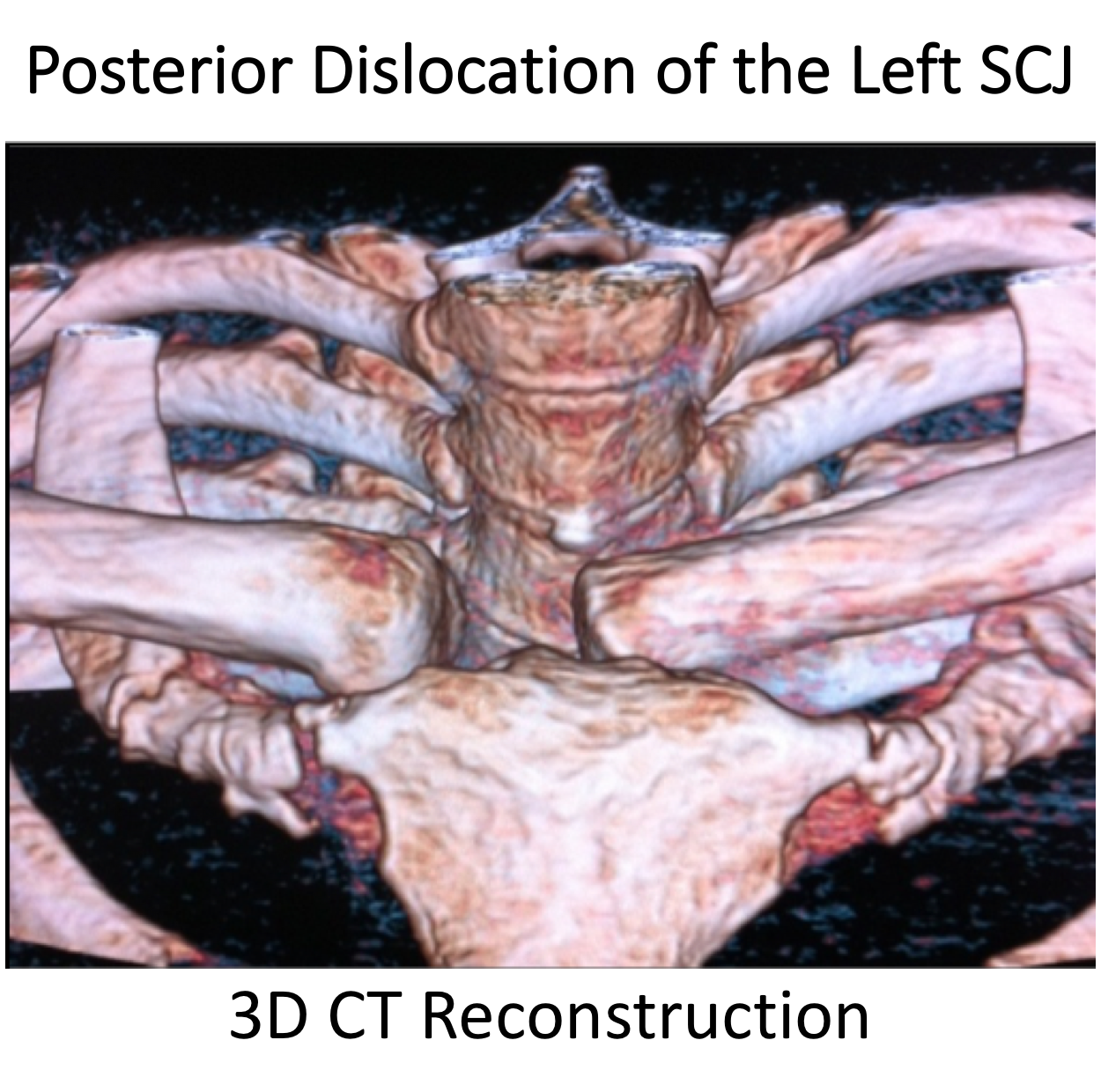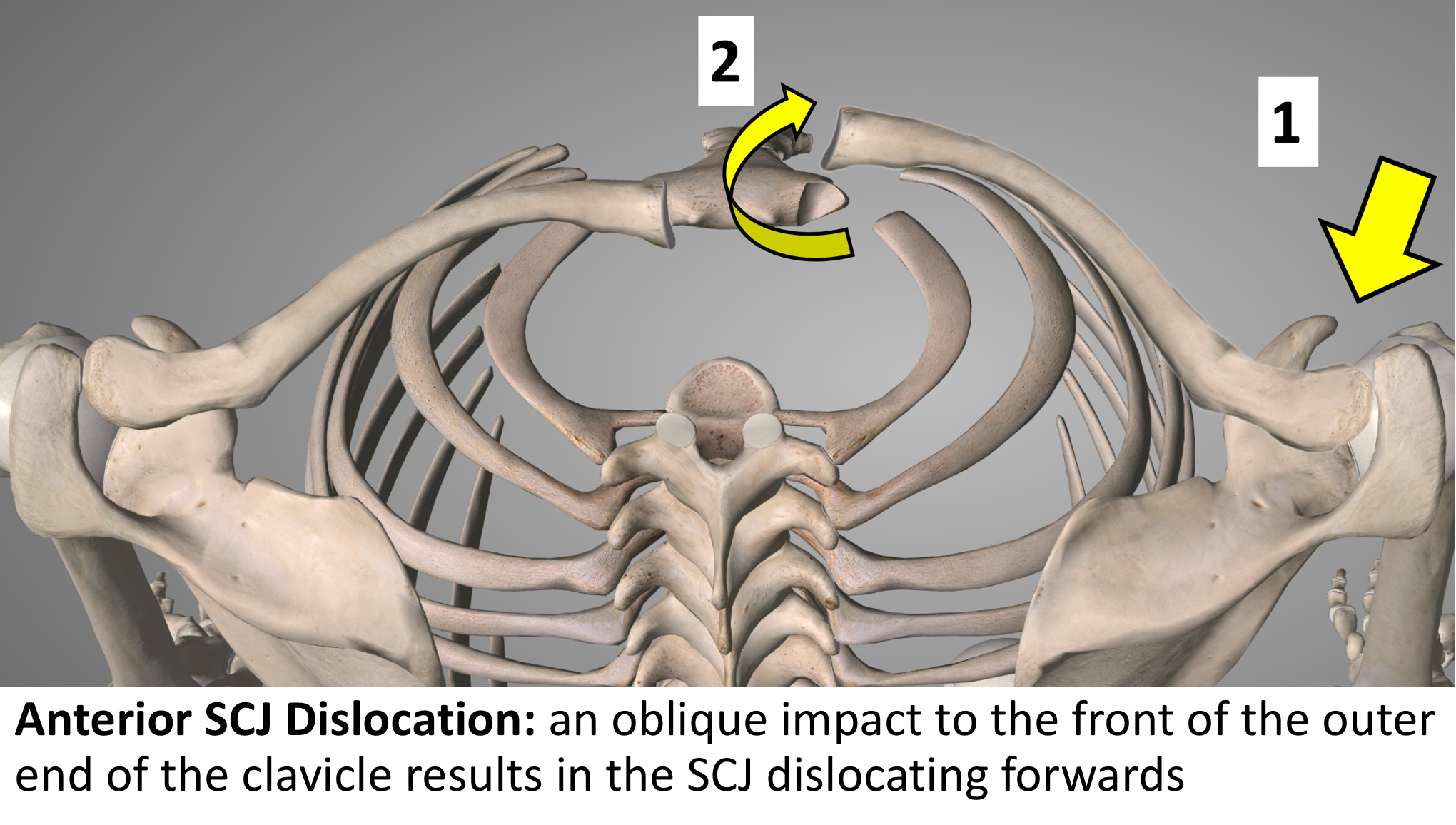Dislocations
Sternoclavicular Joint Dislocations
- SCJ dislocations are rare and can be life threatening
- SCJ dislocations usually occur as the result of a significant injury
Types of Dislocations
- SCJ dislocations can be Anterior or Posterior (forwards or backwards)
- SCJ dislocations can be caused as the result of a Traumatic or Atraumatic injury
- Anterior SCJ Dislocation
- An Anterior dislocation occurs as the result of an indirect force, from the front, to the shoulder
- As the outer end of the clavicle is forced backwards the medial end rotates forwards rupturing the anterior stabilising structures of the SCJ, leading to an anterior dislocation
- Posterior SCJ Dislocation
- A Posterior dislocation can occur as the result of a direct force, from the front, to the medial end of the clavicle, dislocating it backwards
- More commonly, a Posterior dislocation occurs as the result of an indirect force to the back of the shoulder
- As the outer end of the shoulder and clavicle is forced forwards the medial end of the clavicle is rotated backwards rupturing the posterior stabilising structures, leading to a posterior dislocation
- The major concern with a posterior dislocation is that, as the medial end of the clavicle is forced backwards, it can damage the important vascular structures in the neck lying behind it





